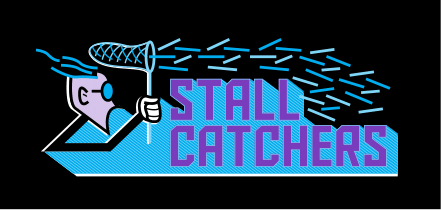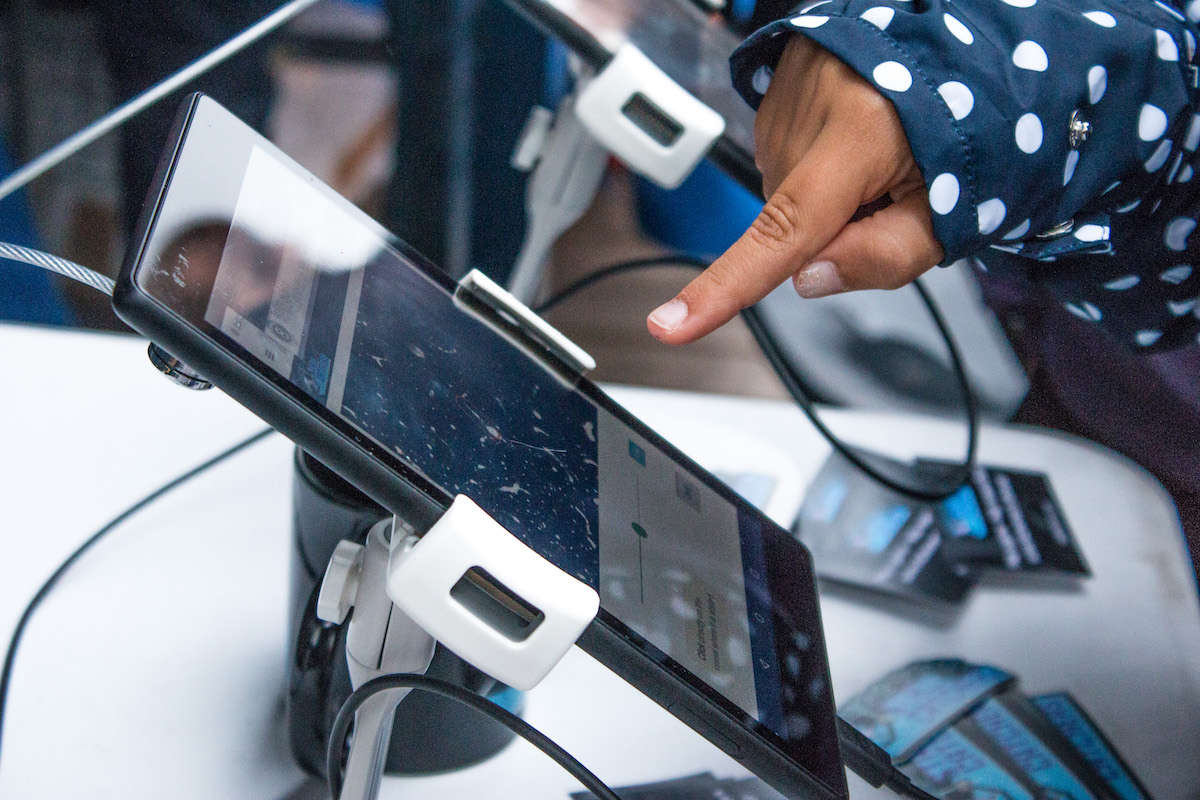How Citizen Science Can Speed Up Alzheimer’s Research
8:00 minutes
 Join the Megathon!
Join the Megathon!On Saturday, April 13, from 1:30 – 3:30pm ET, citizens scientists from all over will work together to complete an entire year’s research in just one hour. Learn more about the Stall Catchers Megathon, and sign up!
Patients with Alzheimer’s disease can experience decreased blood flow in their brains caused by white blood cells sticking to blood vessels that can cause a block. Researchers at Cornell University have found that these stalls can happen in even the tiniest blood vessels, the capillaries. And these tiny blocks can add up to bigger downstream effects. The stalls can reduce blood flow in the brain by 30 percent.

Understanding these capillary blocks could help find new Alzheimer’s treatments—and to do that, the researchers have to look through hundreds of thousands of images of blocked capillaries. Now, you can help. Physicist Chris Shaffer, who is on the Cornell University team, teamed up with Pietro Michelucci to develop a citizen science game called Stall Catchers that uses the power of the crowd to help identify these stalls. They talk about how Stall Catchers can help with their data—and the one-day megathon when you can participate.
Citizen science doesn’t end on Saturday—anyone can participate in science, anywhere, at any time! Here are just a handful of other projects you can try, on a computer, while you’re out on a hike, in your own backyard, or in your favorite quiet place. Have fun!
Find (And Thwart) Mosquito Habitats
GLOBE Observer
With spring comes mosquitoes. Learn to identify and map the locations of mosquito breeding sites and ditch container habitats so that mosquito larvae don’t develop into adult disease vectors. Anyone in the world can participate, and you can even explore the latest data using Google Earth.
Help Map The Moon
Moon Mappers
Help scientists better understand the lunar surface by identifying, measuring, and classifying images of craters on the moon. Moon not exotic enough for you? Give Mars or Mercury or an asteroid a try!
Take A Stream Selfie
Stream Selfie
Stream Selfie connects you with thousands of other citizen scientists to paint a picture of streams across America. Simply go outside, find your local stream, and snap a pic, and share it.
Hunt For Muons
Muon Hunters
Help astronomers to find elusive muons disguised as gamma rays by searching through and clicking rings in sensor images taken by the VERITAS telescope array.
Photograph Your Six-Legged Roommates
Never Home Alone
Contribute to a global survey of the arthropods in homes around the world by photographing insects and other animals in your home—you may even help discover a new species!
Find A Little Peace And Quiet
Silent Earth
The “Silent Earth” project asks you to identify and map the quietest places around the world using your smartphone to help build a global map of quiet.
 Citizen Science Day and many of these projects are powered by SciStarter. Want to join in? Find a citizen or community science project near to you with the SciStarter Project Finder.
Citizen Science Day and many of these projects are powered by SciStarter. Want to join in? Find a citizen or community science project near to you with the SciStarter Project Finder.
Pietro Michelucci is the Project Lead for Stall Catchers, and the director of the Human Computation Institute in Ithaca, New York.
Chris B. Schaffer is an associate professor of Biomedical Engineering and Associate Dean of the Faculty at Cornell University in Ithaca, New York.
IRA FLATOW: As a Sci Fri listener, you’ve been asked numerous times to put on your citizens science cap and do real research, meaningful stuff. And today you’ve got a chance to help solve a question about Alzheimer’s disease. Alzheimer’s, as you know, is a complicated disease. It can affect a person’s brain and behavior in many different ways.
There isn’t one definition of the disease, but about 30% of people with Alzheimer’s experience a decrease in blood flow to their brains caused by white blood cells clumping up in the vessels. And researchers at Cornell University have found that this blockage can happen in the tiniest blood vessels in the brain, of course, the capillaries. And they’re trying to figure out why this happens and what are the effects.
And to do that, they have to go through hundreds of thousands of images of hair-like capillaries, and that could take years for one scientist. That’s why they’re turning to the power of the crowd. They’ve created a game called Stall Catchers, and the aim is to go through one year’s worth of data in a one day megathon, as they call it.
And here to tell us more are Chris Schaffer, who is part of that Cornell research team, associate professor of biomedical engineering there, and Pietro Michelucci, who’s a project lead for Stall Catchers and director of the Human Computation Institute based out of Ithaca, New York. Welcome to Science Friday.
PIETRO MICHELUCCI: Thank you. It’s great to be here.
CHRIS SCHAFFER: Yes, thanks.
IRA FLATOW: Chris, let’s talk about your work is in mice. How much do we know about why Alzheimer’s affects the blood flow in the brain?
CHRIS SCHAFFER: So in mice that have been genetically engineered to get Alzheimer’s disease, we found that this roughly 30% decrease in brain blood flow that’s associated with Alzheimer’s is caused by a certain class of white blood cells that are adhered and stuck inside individual capillary segments. When we gave a drug that interfered with the adhesion of those white blood cells, those stalled capillaries started flowing again. And after that happened blood flow in the brain improved by about 30%, so recovering the deficit that those Alzheimer disease mice had relative to non-Alzheimer disease mice.
IRA FLATOW: Do we know why the white blood cells clump in the vessels of the Alzheimer’s patients?
CHRIS SCHAFFER: So, again, in Alzheimer disease mice, but our thinking is that that’s due to inflammation in the brain caused by the aggregates of this small peptide called amyloid beta, which is the thing that aggregates into the plaques that are the classic pathological hallmark of Alzheimer’s disease. So those aggregates of amyloid beta, one of the things they do is they just drive a general brain inflammation. And one of the things that happens in inflamed tissue is there’s an increase in the number of proteins along the cells that line the blood vessel walls, the endothelial cells. There’s an increase in proteins that white blood cells will stick to when they see them.
IRA FLATOW: Gotcha.
CHRIS SCHAFFER: Kind of when you have a cut or infection or something like, that those white blood cells crawl into the tissue and can kill pathogens, help repair tissue, things like that. But it looks like in the case of Alzheimer’s disease it’s a low level of inflammation. It’s just causing these white blood cells to stick and block blood flow in individual capillary segments, and they don’t seem to be doing something good.
IRA FLATOW: I’m Ira Flatow. This is Science Friday from WNYC Studios.
Pietro, we have big, big supercomputers, and we have neural nets and AI that can analyze tons of data. Why are you turning to people for this project? What can they do better?
PIETRO MICHELUCCI: Well, that’s the million dollar question. So AI is doing amazing things today. And in some part that’s due to advances in AI technology, but in large part, it’s just due to having faster computers. And having even the fastest calculator doesn’t make it more than a calculator. It’s how it thinks, and humans still think in ways that AI cannot.
And so when I met Chris and we started talking about the kind of analysis that needed to be done on his Alzheimer’s data sets, the first question was, well, have you tried using machine learning and various forms of AI to do this?
And he said, yeah. We have. It’s just not quite good enough. It’s about 85% accurate and we need 99%.
IRA FLATOW: So people are just better at this is what you’re saying.
PIETRO MICHELUCCI: Well, yeah. I think that’s exactly right. We still have an edge on the machines.
And one reason for that is that most of the AI approaches today are based on pattern recognition, and that means the answer has to be in the pixels. It has to be in the picture you’re looking at. And sometimes the picture isn’t enough. It takes a real world context to understand what’s going on.
IRA FLATOW: That’s something people can do. OK. So if people are interested, our audience is interested, how do they sign up for this?
PIETRO MICHELUCCI: Yeah, absolutely. So tomorrow is National Citizen Science Day, and we partnered with SciStarter to put on a nationwide event. And the featured Citizen Science project is Stall Catchers, and it’s called the megathon.
So you go to megathon.us and you register there. And then between the hours of 10:30 and 12:30 tomorrow morning Pacific time, and I guess if you’re on the east coast add three hours to that, just tune in to our Livestream and play the game during that time.
And you will be analyzing data next to the scientists. You’re not a subject in the experiment. You’re a scientist participating in the analysis.
IRA FLATOW: Well, this sounds like a very important experiment then– or, I mean analysis. So what if you’re afraid of making a mistake, and– I’m just a person.
PIETRO MICHELUCCI: Right. And so this is– when we developed the platform to pull in information from the crowd, this was one of our first concerns is– and there’s a fair amount of skepticism in the scientific community about how much can you trust scientific analysis generated by members of the general public?
And so we use this approach called wisdom of crowds. And that means that we’ll show the same tiny capillary vessel to several different people, and then we’ll combine their answers together in a sensible way. So when you get one wrong then three other people are getting it right. And in the end we validated the platform to ensure that we’re meeting Cornell’s stringent data quality requirements no matter whether you make a mistake or not.
IRA FLATOW: All right. Let me repeat how people can sign up. You can sign up for the Stall Catchers megathon. It’s happening this Saturday.
You can see a list of Citizen Science Projects. It’s up on our website at ScienceFriday.com/catchers. And how many people are we looking for?
PIETRO MICHELUCCI: Well, we’re aiming for 100,000 people.
IRA FLATOW: OK. We’re going to melt your server. We have done that before with other– that’s a good thing, I think. So we’ll get–
CHRIS SCHAFFER: Absolutely.
PIETRO MICHELUCCI: We hope you will.
IRA FLATOW: We’ll try to get you enough people. Thank you for taking time to be with us today. Pietro Michelucci, who is project lead for Stall Catchers and director of the Human Computation Institute based in Ithaca, and Chris Schaffer, associate professor of biomedical engineering at Cornell University in Ithaca.
And, of course, you can go to our website at ScienceFriday.com/catchers where you can help– really. You can help real scientists do an analysis of their data. We’ve had some great luck with this, lots of people get involved.
I’ll give you that website again. It’s ScienceFriday.com/catchers for our Citizen Science Project of the month.
Copyright © 2019 Science Friday Initiative. All rights reserved. Science Friday transcripts are produced on a tight deadline by 3Play Media. Fidelity to the original aired/published audio or video file might vary, and text might be updated or amended in the future. For the authoritative record of Science Friday’s programming, please visit the original aired/published recording. For terms of use and more information, visit our policies pages at http://www.sciencefriday.com/about/policies/